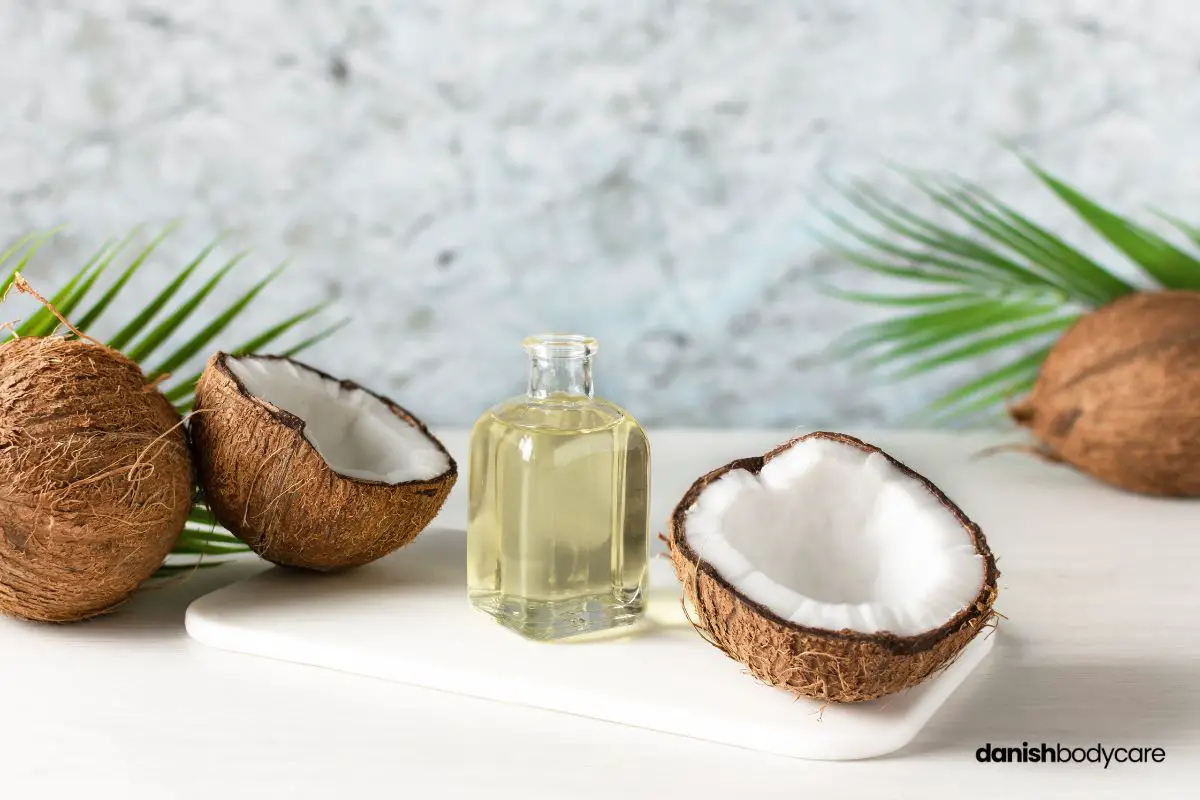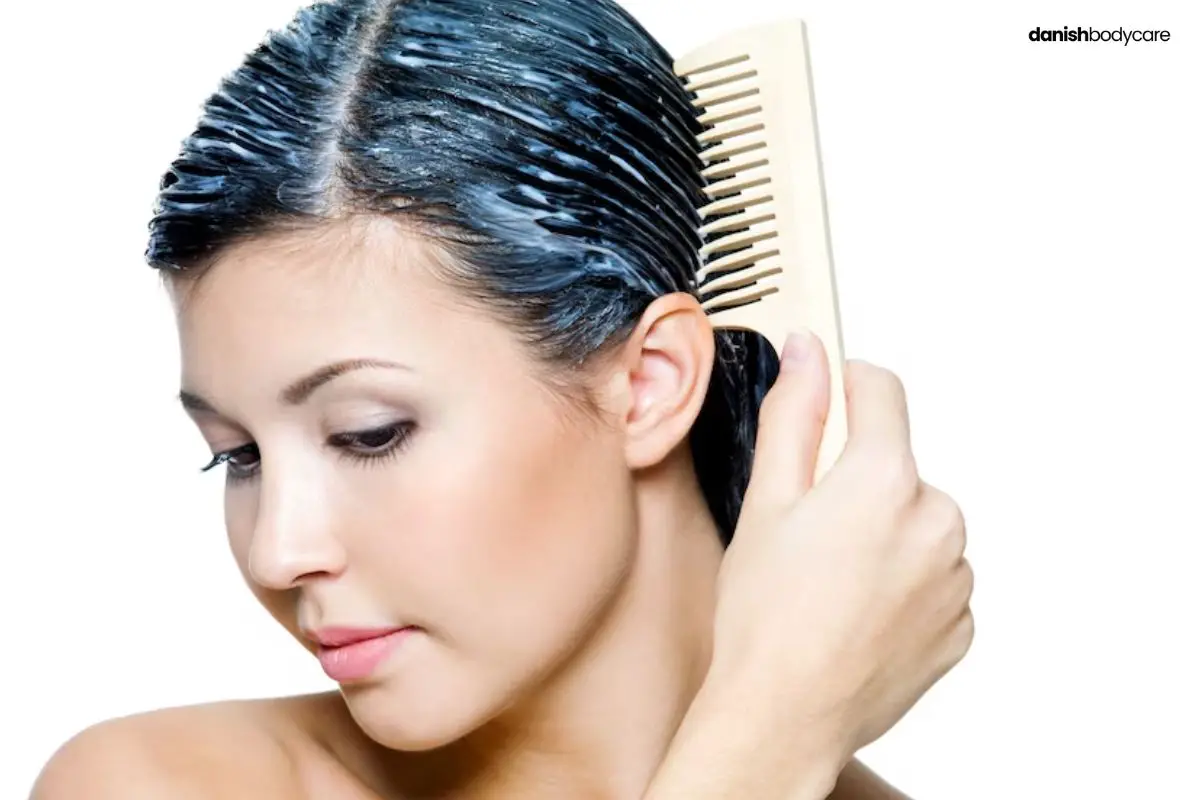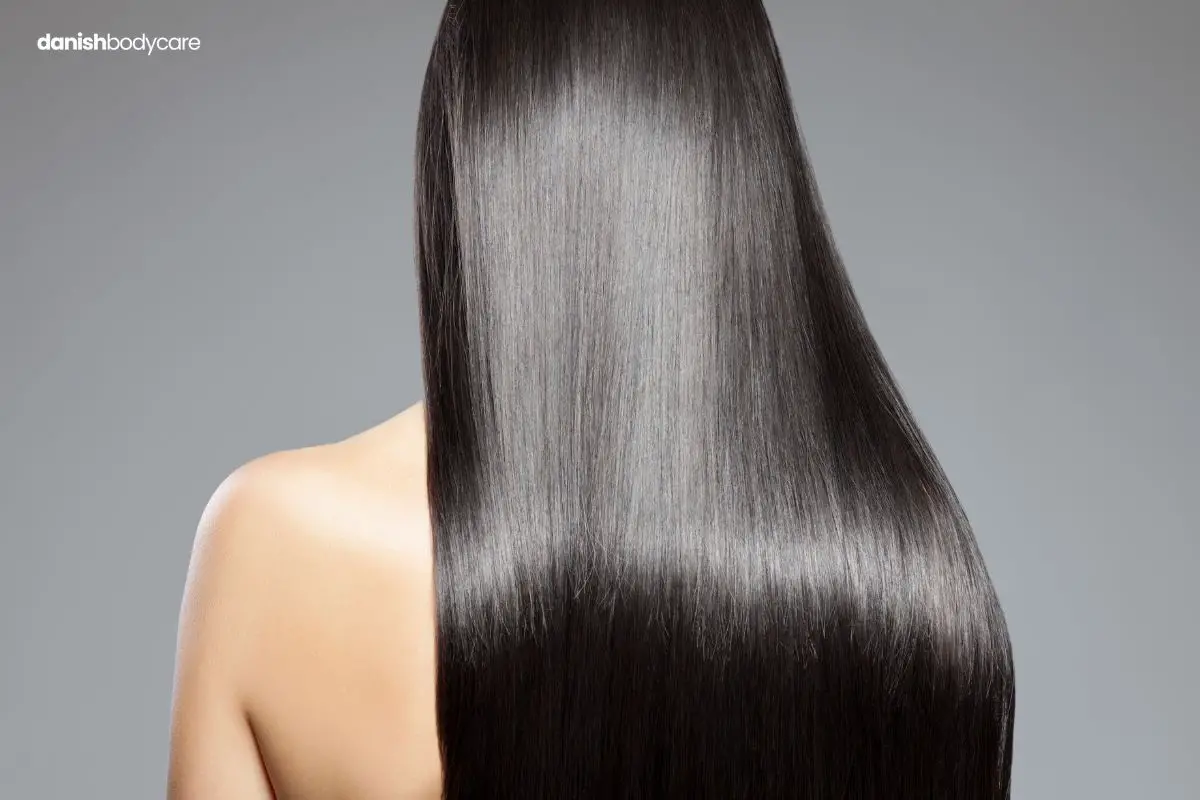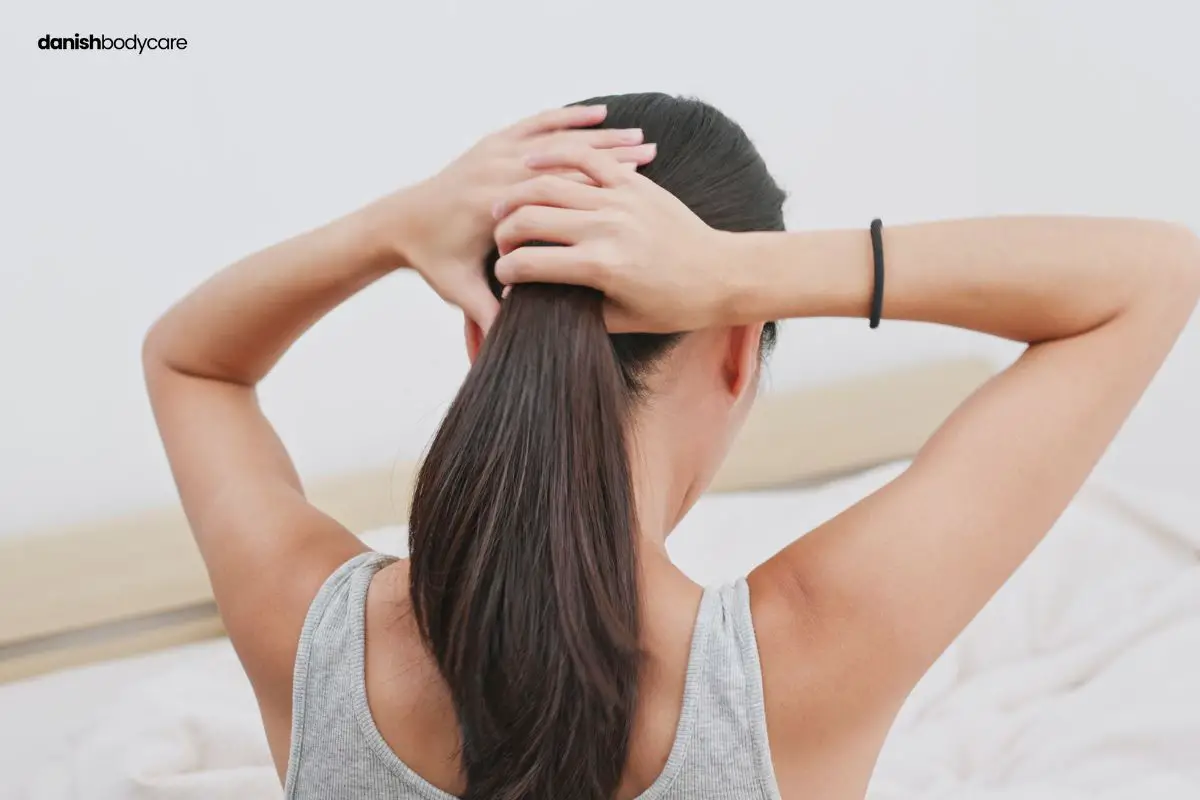Low-porosity hair has a hard time soaking up moisture. And since coconut oil is often recommended for moisturizing, it’ll work, right?
The fact is, coconut oil often hurts more than it helps low-porosity hair.
As the renowned stylist Vidal Sassoon once said, “Hair is a fabric.” It requires unique care, just like different materials.
In this article, we’ll dissect the suitability of coconut oil for low-porosity hair.
What Is Low Porosity Hair

If your hair has low porosity, it means your hair has a tight cuticle layer. This makes it difficult for moisture to enter or leave your hair.
You may notice that water beads up on your hair instead of getting absorbed.
Since it’s harder for products to penetrate your hair, they too may build up on the surface. This can make your hair feel weighed down or greasy.
Characteristics of Low Porosity Hair
Here are the most common characteristics of low-porosity hair:
- Low-porosity hair is often resistant to moisture.
- It typically has a long drying time.
- Product buildup is a common issue with this hair type.
- It usually has difficulty absorbing oil.
- Low porosity hair is often sensitive to protein.
- It can appear shiny but often looks dull and frizzy.
- This hair type is resistant to chemical treatments.
- While it may feel smooth to the touch, it can often be rough and dry.
- Low-porosity hair is usually less elastic than other hair types.
- It is prone to tangles and matting.
- In a water test, this hair type usually floats.
- It is more prone to split ends than other hair types.
- Product tends to build up easily on the scalp of those with low porosity hair.
Hair Porosity and the Cuticle Layer
Hair porosity refers to how well your hair absorbs and keeps in moisture. This is because of your hair’s cuticle layer, the outermost part of each hair strand.
Healthy hair has a compact cuticle layer, protecting the inner layers and retaining moisture.
In low-porosity hair, the cuticles are packed together. this creates a barrier that prevents moisture from entering or escaping with ease.
Benefits of Coconut Oil for Low-Porosity Hair
Coconut oil is famous in the beauty industry. While it has many benefits for the skin, it’s different for hair. Coconut oil has the following hair benefits:
- Provides fatty acids and nutrients
- Has moisturizing properties
- Protects against breakage
Fatty Acids and Nutrients
Coconut oil is rich in fatty acids that provide nourishment to your hair. It contains lauric acid, a medium-chain fatty acid. This fatty acid can penetrate your hair shaft and help moisturize it.
The presence of vitamin E in coconut oil supports your hair’s health with its antioxidant properties.
You will notice the difference as your hair becomes stronger and healthier when you include coconut oil in your hair care routine.
Moisturizing Properties
One of the main benefits of coconut oil is its moisturizing properties. Coconut oil can lock in moisture and keep your hair hydrated.
By sealing moisture inside your hair shaft, it makes your hair more manageable, soft, and less prone to tangles.
Applying coconut oil to your hair will ensure that it stays well-hydrated. This leads to less frizz and damage.
Protection Against Breakage
The use of coconut oil hair helps protect it from breakage. This oil penetrates your hair shaft and nourishes your hair from within. It strengthens your hair and makes it more resistant to external damage.
This is important as you grow your hair longer since longer hair is more susceptible to breakage and damage.
Applying coconut oil will provide your hair with the protection and strength it needs to grow long and healthy.
Is Coconut Oil Good for Low Porosity Hair?
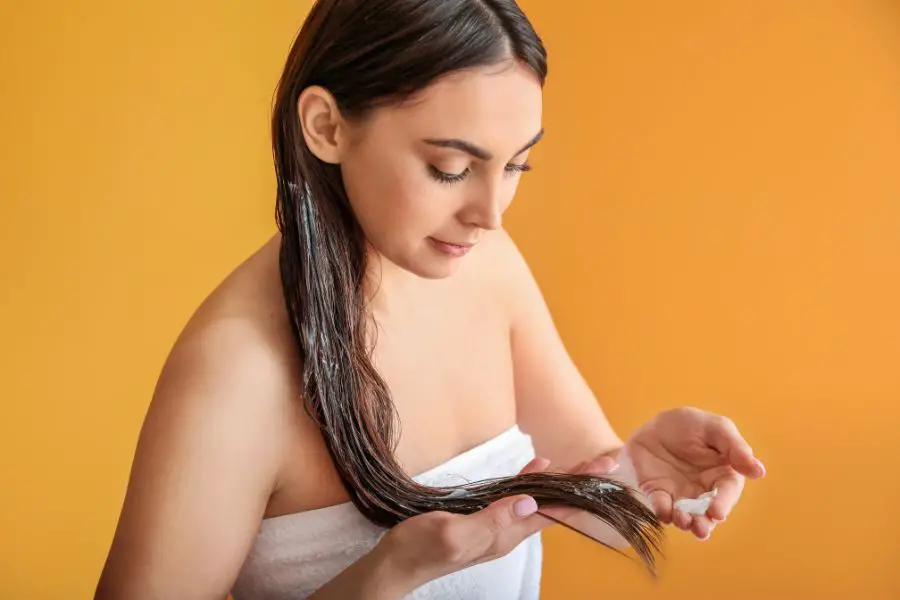
Coconut oil might not be the best choice for low-porosity hair due to potential dryness and product build-up.
Low-porosity hair has closed cuticles. This makes it challenging for moisture to penetrate the hair shaft. Having a heavy oil like coconut oil may make it harder for your hair to keep moisture.
Consider lighter oil alternatives that are more suitable for low-porosity hair. These oils can help with moisture retention without causing dryness or build-up.
Pay attention to how your hair reacts to different oil treatments and choose the one that works best for you.
Which Oil Is Best for Low Porosity Hair?
There are two types of oils you can use for low-porosity hair: lightweight and heavy oils. It’s important to know which one to choose to benefit your type of hair.
Lightweight Oils
If your hair has low porosity, light oils are best. They can get into your hair without making it heavy or leaving too much behind.
Some great options are:
- Jojoba oil
- Grapeseed oil
- Argan oil
- Sweet almond oil
| Oil | Benefits |
|---|---|
| Jojoba Oil | Resembles natural hair oil, keeps hair moisturized, and prevents dryness. |
| Grapeseed Oil | Rich in antioxidants, promotes hair health and smoothness, ideal for low hair porosity. |
| Argan Oil | Nourishing properties, improves hair elasticity, and prevents breakage. |
| Sweet Almond | High in vitamins A and E, provides hair with a silky shine. |
Heavy Oils
Even if your hair doesn’t soak up moisture well, light oils usually work best. But sometimes, you might need heavier oils. Be sure to use these thick oils with caution. Some examples include:
- Fractionated coconut oil
- Apricot kernel oil
- Avocado oil
| Oil | Benefits |
|---|---|
| Fractionated Coconut Oil | Lighter and easier to absorb than regular coconut oil due to separation of long-chain fatty acids. |
| Apricot Kernel Oil | Locks in moisture without causing buildup, thanks to its abundance of unsaturated fatty acids. |
| Avocado Oil | Lighter and easier to absorb than regular coconut oil due to the separation of long-chain fatty acids. |
How To Apply Oils On Low Porosity Hair
Here is how to apply oils to low-porosity hair:
- Wash your hair
- Use enough oil
- Warm up the oil
- Apply from ends to scalp
- Distribute the oil
- Style your hair
Step 1: Wash your hair
Start with clean, damp hair. It’s easier to apply oils on damp hair as it helps to distribute the oil evenly.
Step 2: Use enough oil
Determine the right amount of oil for your hair length and thickness. It’s better to start with a small amount to avoid overdoing it.
Step 3: Warm up the oil
Pour the chosen oil into the palm of your hand, then rub your hands together to warm it up. This will help the oil penetrate your low-porosity hair with more ease.
Step 4: Apply from ends to scalp
Apply the oil to your hair, starting from the ends and working your way up toward the scalp. Focus on the most damaged and driest areas of your hair.
Step 5: Distribute the oil
Use a wide-tooth comb or your fingers to distribute the oil throughout your hair evenly. Avoid applying too much oil on your scalp, as it can cause buildup.
Step 6: Style your hair
Once the oil is evenly distributed, you can style your hair as desired. You can also let your hair air-dry, making sure it’s well-conditioned and moisturized.
Alternative Moisturizing Methods for Low Porosity Hair
There are other ways to moisturize your low-porosity hair with more efficiency.
You might need to experiment with different products to find the one that works best for you.
Natural Oils
Consider using lightweight oils like jojoba oil, grapeseed oil, argan oil, or sweet almond oil.
These types of oils can provide moisture without causing buildup or weighing down your hair. You can apply these oils to your hair after washing or use them as a pre-poo treatment before shampooing.
Deep Conditioner
Choose a deep conditioner designed for low-porosity hair.
This kind of conditioner will have the right balance of ingredients to penetrate and nourish your hair strands.
Gentle Shampoos
Use a gentle shampoo to wash your hair so it doesn’t strip away any essential moisture.
Leave-In Conditioner
Leave-in conditioners are also an excellent option for low-porosity hair. These products provide additional moisture and manageability throughout the day.
Look for a lightweight leave-in conditioner that won’t weigh your hair down or cause build-up.
Low Porosity Hair Care Tips
It is not always easy to take care of low-porosity hair. If you watch the water temperature and avoid sulfates and heavy styling products, things become easier.
You can also apply some techniques of moisture retention to care for this type of hair.
Optimal Water Temperature
When caring for your low-porosity hair, it’s essential to use lukewarm water when washing your hair.
Lukewarm water can help open up the hair cuticles, allowing for better absorption of moisture and other nutrients.
The use of cold water can help close the cuticles, sealing in the moisture you just added.
Remember to use lukewarm water for cleansing and cold water for the final rinse.
Techniques for Sealing Moisture
Here are some techniques you can use for sealing moisture into low-porosity hair::
- Apply a lightweight oil, like jojoba or argan oil, as a sealant after using a water-based moisturizer.
- Use a leave-in conditioner that is specifically designed for low-porosity hair.
- Use heat when applying deep conditioners or hair masks. You can use a hair steamer or wrap your hair in a warm towel.
Avoid Sulfates and Heavy Styling Products
Sulfates are harsh detergents commonly found in shampoos that can strip your hair of its natural oils. This makes it even harder for low-porosity hair to retain moisture.
Opt for sulfate-free shampoos and conditioners to prevent stripping your hair of its natural oils.
Avoid using heavy styling products like waxes, pomades, and certain oils. Instead, look for lightweight products designed for low-porosity hair.
This will help prevent build-up, allowing your hair to breathe and better retain its moisture.
Frequently Asked Questions
How often should I apply oil to my low-porosity hair?
Put oil in your low-porosity hair once or twice a week. It helps keep your hair moist and healthy. It also stops too much product from building up in your hair.
How do hot oil treatments affect low-porosity hair?
Hot oil treatments can make low-porosity hair better. Low-porosity means your hair does not let in moisture easily. These treatments make the outer layer of your hair open up. This lets the oil get into your hair better. This makes your hair more moist and healthy. Make sure to use light oils for these treatments. Jojoba oil or grapeseed oil are good choices.
How can I reduce oil buildup on my low-porosity hair?
To keep your low-porosity hair free from too much oil, here are some easy steps. Use light oils like argan or sweet almond oil. Don’t use too much. Focus on the tips of your hair. Use a gentle shampoo when you wash your hair.

